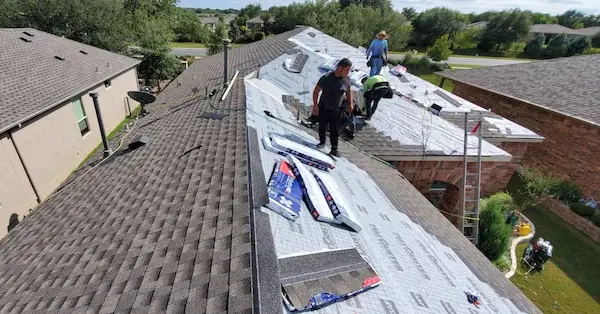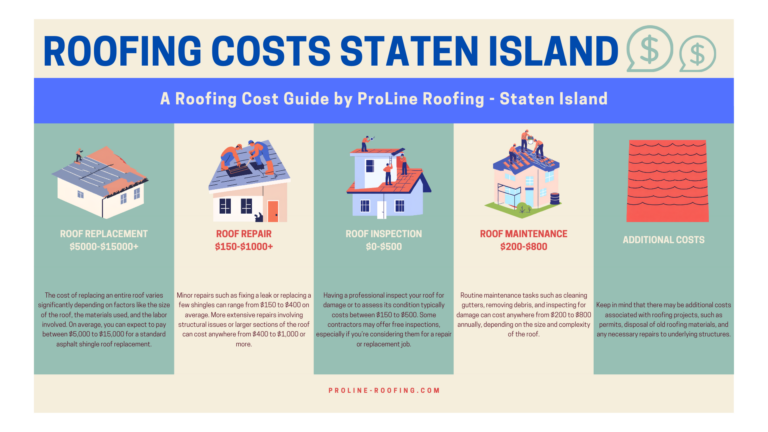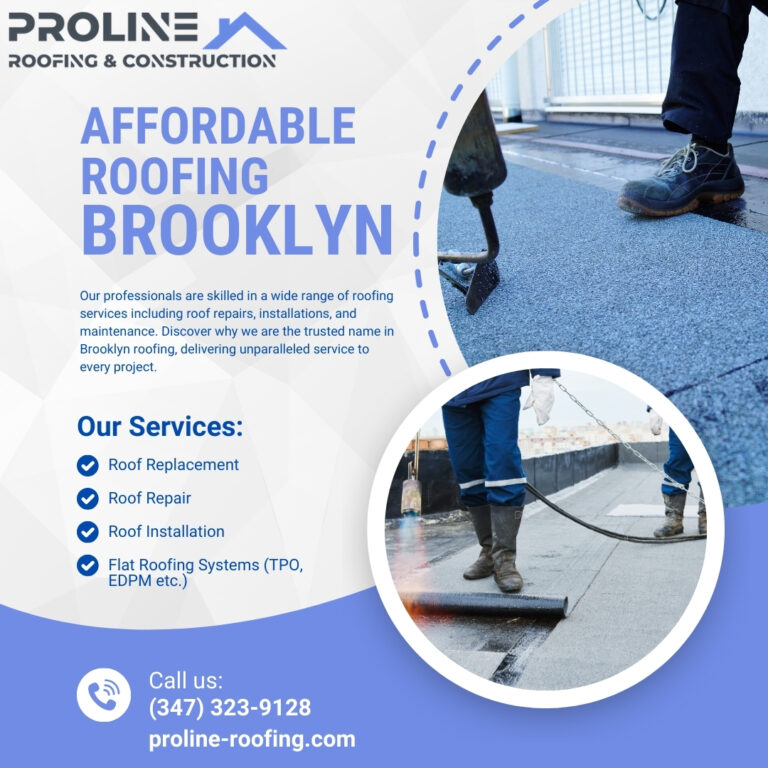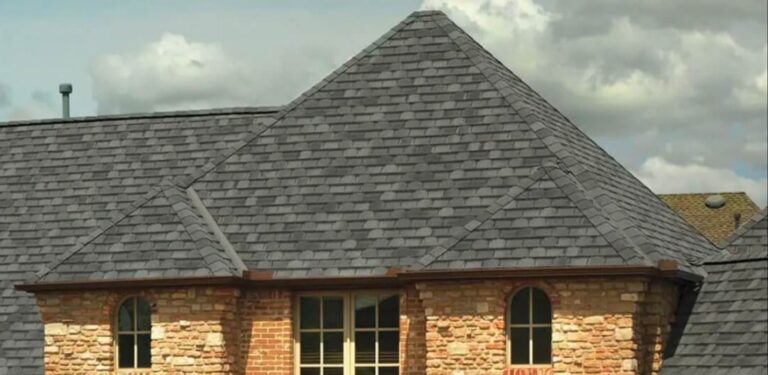When it comes to protecting your home or commercial property, choosing the right roofing material is crucial. While traditional shingles are a common choice for sloped roofs, flat or low-slope roofs require a different approach. Enter rolled roofing – a versatile and durable solution that is increasingly popular in Staten Island, Brooklyn, and beyond.
Rolled roofing encompasses a wide range of materials specifically designed for low-slope applications, from residential flat roofs to large commercial buildings. These materials come in convenient rolls, allowing for efficient installation and a seamless, watertight finish.
However, with various options available, such as modified bitumen, TPO, and PVC, selecting the right rolled roofing material can be a daunting task.
Partnering with a reputable roofing contractor like ProLine Roofing is essential when it comes to rolled roofing projects. Our expertise ensures not only the selection of the appropriate materials but also proper installation, ensuring long-lasting protection and peace of mind for years to come.
What is Rolled Roofing?
Rolled roofing is a broad term used to describe a variety of roofing materials designed specifically for low-slope or flat roof applications. Unlike traditional shingles, which are designed to shed water on sloped roofs, rolled roofing materials provide a seamless, watertight membrane that effectively protects against the elements.
Difference from traditional shingles
Traditional shingles, such as asphalt or composite shingles, are designed to overlap and interlock, creating a layered system that allows water to flow down the slope of the roof. However, on flat or low-slope roofs, this overlapping system is ineffective, as water can easily pool and cause leaks. Rolled roofing materials, on the other hand, are applied in a continuous sheet, creating a seamless, watertight surface that can withstand ponding water.
Suitable applications for rolled roofing materials
Rolled roofing is an excellent choice for a wide range of applications, including:
- Flat or low-slope residential roofs
- Commercial and industrial buildings with flat or low-slope roofs
- Outbuildings, sheds, and other auxiliary structures with flat roofs
- Roof recovers or re-roofing projects on existing flat or low-slope roofs
Types of Rolled Roofing
Modified Bitumen Roofs
- History and development: Modified bitumen roofing emerged in the 1960s as an alternative to traditional built-up roofing systems. It combined asphalt and reinforcing materials like fiberglass or polyester.
- Construction and composition: Modified bitumen roofing typically consists of a base sheet, a reinforced membrane, and a granular surface layer, all designed to provide durability and weather resistance.
TPO Roofing
- Definition and popularity: TPO, or Thermoplastic Polyolefin, has become one of the most popular rolled roofing materials for commercial applications. It is a single-ply membrane known for its energy efficiency, reflectivity, and resistance to chemical exposure.
- Installation process and characteristics: TPO roofing is installed in large rolls and secured to the roof deck using specialized plates and screws or adhesives. The seams are then heat-welded to create a watertight seal.
- Color options and suitability for residential use: While TPO is predominantly available in white or light colors to enhance energy efficiency, some manufacturers offer limited color options like gray or black. Its performance and durability make it suitable for residential flat roofs, although aesthetics may be a consideration.
PVC Roofing
- Similarities and differences with TPO: PVC (polyvinyl chloride) roofing is similar to TPO in terms of installation methods and single-ply membrane construction. However, PVC is known for its superior resistance to grease, oils, and certain chemicals, making it a popular choice for restaurants and industrial settings.
- Advantages in specific applications (e.g., restaurants): The exceptional chemical resistance of PVC roofing makes it an ideal choice for restaurants, where grease and exhaust from kitchen vents can degrade other roofing materials.
- Cost and recent trends: PVC roofing is generally more expensive than TPO, and recent advancements in TPO technology have made it a more cost-effective option in many cases. However, PVC remains a preferred choice in specific applications where its chemical resistance is crucial.
Installation Methods for Rolled Roofing
Torch-applied method: In this method, the rolled roofing material is heated with a torch, activating the sealant and allowing it to adhere to the substrate.
Adhesive method: This technique involves applying a specialized adhesive to the roof deck, onto which the rolled roofing material is then laid and bonded.
Self-adhering method (popular in residential applications): Self-adhering rolled roofing membranes have a pre-applied adhesive layer, eliminating the need for torches or additional adhesives. This method has gained popularity in residential applications due to its ease of installation and safety.
Expected lifespan and factors affecting durability: With proper installation and maintenance, rolled roofing systems can last up to 20 years or more. However, factors like climate, weather conditions, foot traffic, and adherence to manufacturer guidelines can affect the overall lifespan and durability of the roofing system.
Choosing the Right Rolled Roofing Material
Assessing your roof’s slope and conditions: The first step in selecting the appropriate rolled roofing material is to evaluate the slope and existing conditions of your roof. While rolled roofing is designed for low-slope or flat roofs, different materials may be better suited for specific slope ranges. Additionally, factors such as the age and condition of the existing roof deck can influence the choice of roofing material and installation method.
Considering climate and weather in Staten Island, NY: The weather and climate conditions in Staten Island, NY, play a crucial role in determining the best rolled roofing option. Materials like TPO and PVC are known for their resistance to UV rays and temperature fluctuations, making them suitable for the area’s varied weather patterns. Additionally, the potential for ponding water on flat roofs should be taken into account when selecting a material that can withstand prolonged exposure.
Balancing cost, performance, and aesthetic preferences: While performance and durability are paramount, the cost and aesthetic appeal of the rolled roofing material should also be considered. TPO and modified bitumen roofing are generally more cost-effective options, while PVC roofing may be more expensive but offer superior chemical resistance. Additionally, if the roof is visible from the ground or surrounding areas, the color and appearance of the material may be a factor in maintaining the desired aesthetic for your property.
The Importance of Professional Installation
Risks of DIY or inexperienced installation
Attempting to install rolled roofing as a DIY project or hiring inexperienced contractors can lead to costly mistakes and premature roof failures. Improper material handling, inadequate seam sealing, and incorrect attachment methods can compromise the roof’s watertight integrity, leading to leaks, ponding water, and potential structural damage.
Benefits of hiring a reputable roofing contractor like ProLine Roofing
By partnering with a reputable roofing contractor like ProLine Roofing, you can ensure that your rolled roofing project is executed with the highest levels of expertise and professionalism. Experienced contractors have the knowledge and skills to assess your roof’s unique requirements, select the most suitable materials, and implement proper installation techniques, ensuring a long-lasting and reliable roofing system.
Ensuring proper installation and material handling
Professional roofing contractors understand the importance of adhering to manufacturer guidelines and industry best practices. They employ the correct methods for material handling, seam sealing, and attachment, ensuring a watertight and durable installation. Additionally, reputable contractors often offer warranties and guarantees on their workmanship, providing added peace of mind and protection for your investment.
Conclusion
Rolled roofing presents a versatile and reliable solution for low-slope and flat roofs in Staten Island, NY. With a variety of materials like modified bitumen, TPO, and PVC, each offering unique advantages and characteristics, choosing the right option requires careful consideration of your roof’s conditions, local climate, and performance requirements.
While cost and aesthetics play a role, investing in a high-quality rolled roofing system and professional installation can save you from costly repairs and premature replacements in the long run. That’s where the expertise of ProLine Roofing comes into play. As a trusted roofing contractor in Staten Island, NY, they have the knowledge and experience to guide you through the entire process, from material selection to flawless installation.
Don’t compromise on the protection and longevity of your roof. Contact ProLine Roofing today and let their skilled professionals provide you with a tailored solution that meets your unique needs and ensures years of reliable performance for your Staten Island, NY property.




